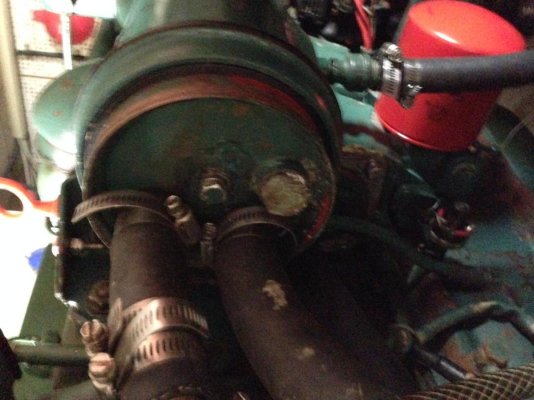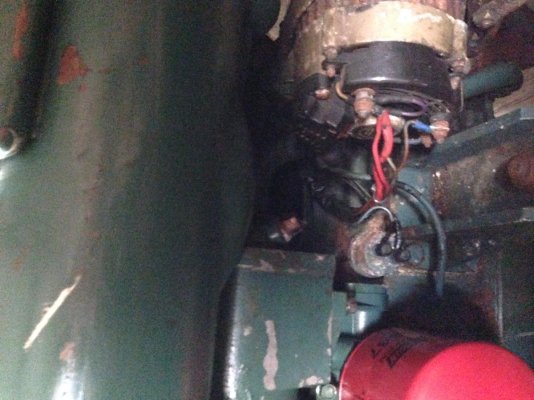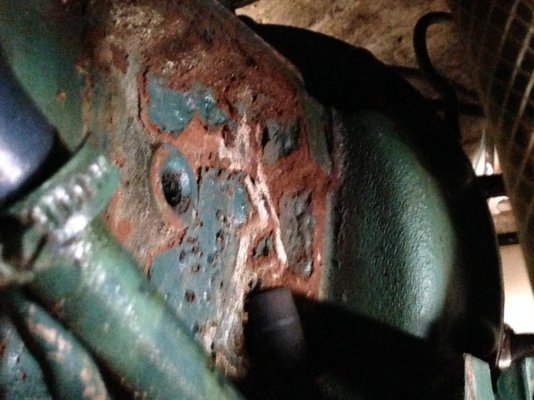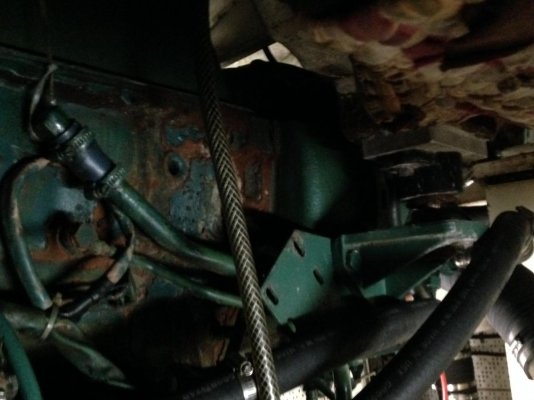camdunning
Veteran Member
Hi TW -
I'm new to this site and new to boating generally, but I've poked around the forums here a fair bit and it seems like a great resource. Looking forward to any tips you all might be able to provide as I get up to speed on the world of boat ownership.
I have a pretty basic question about engine maintenance. Since I'm new to owning a boat I'm not totally sure what I need to be doing to stay on top of things, and want to make sure I'm not doing serious damage through neglect. For some background, I purchased a 1986 36' Nova Sundeck about 6 months ago and have been using it a liveaboard. My girlfriend and I are both students, so living on a boat has been convenient with location and monthly costs, and lots of fun so far. The boat has twin Volvo Pentas which both have low hours, but the starboard side has issues with seals on the heat exchanger. When the engines are running, I think seawater comes through the seals and gets in the engine compartment. Over the last 6 months I've seen corrosion start to build up on the engines, which I'm theorizing is from the heat exchanger issue, and has me a bit concerned. I'm planning on having the heat exchanger issue fixed as soon as I can get the diesel guy out here (and can afford it), but in the meantime I want to stop the corrosion from continuing. What's the best way to do this? I have some saltaway that the previous owner left me, can I go wipe down the engines with this to get the salt off? Or can you spray it down carefully with a spray bottle? Or am I way off base?
For what its worth, I've replaced 3 of the 4 engine zincs, but couldn't swap out the fourth because I think some of the old one broke off and is preventing the new zinc from getting in there. There also is always a little bit of standing water in the bilge under the engines which doesn't look great and smells terrible, part of the reason I need to get the mechanic out here.
Thanks in advance for any tips, sorry for the basic question but I'm just starting to learn the ropes!
I'm new to this site and new to boating generally, but I've poked around the forums here a fair bit and it seems like a great resource. Looking forward to any tips you all might be able to provide as I get up to speed on the world of boat ownership.
I have a pretty basic question about engine maintenance. Since I'm new to owning a boat I'm not totally sure what I need to be doing to stay on top of things, and want to make sure I'm not doing serious damage through neglect. For some background, I purchased a 1986 36' Nova Sundeck about 6 months ago and have been using it a liveaboard. My girlfriend and I are both students, so living on a boat has been convenient with location and monthly costs, and lots of fun so far. The boat has twin Volvo Pentas which both have low hours, but the starboard side has issues with seals on the heat exchanger. When the engines are running, I think seawater comes through the seals and gets in the engine compartment. Over the last 6 months I've seen corrosion start to build up on the engines, which I'm theorizing is from the heat exchanger issue, and has me a bit concerned. I'm planning on having the heat exchanger issue fixed as soon as I can get the diesel guy out here (and can afford it), but in the meantime I want to stop the corrosion from continuing. What's the best way to do this? I have some saltaway that the previous owner left me, can I go wipe down the engines with this to get the salt off? Or can you spray it down carefully with a spray bottle? Or am I way off base?
For what its worth, I've replaced 3 of the 4 engine zincs, but couldn't swap out the fourth because I think some of the old one broke off and is preventing the new zinc from getting in there. There also is always a little bit of standing water in the bilge under the engines which doesn't look great and smells terrible, part of the reason I need to get the mechanic out here.
Thanks in advance for any tips, sorry for the basic question but I'm just starting to learn the ropes!




